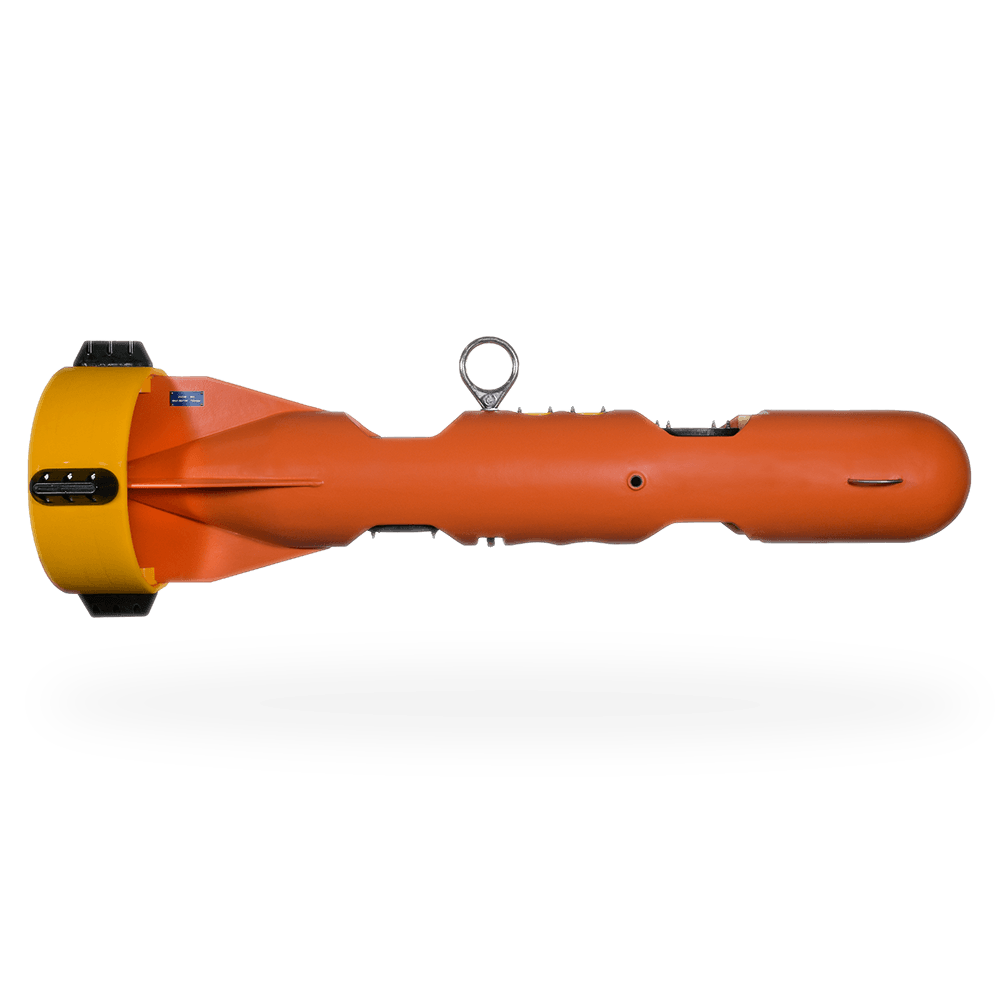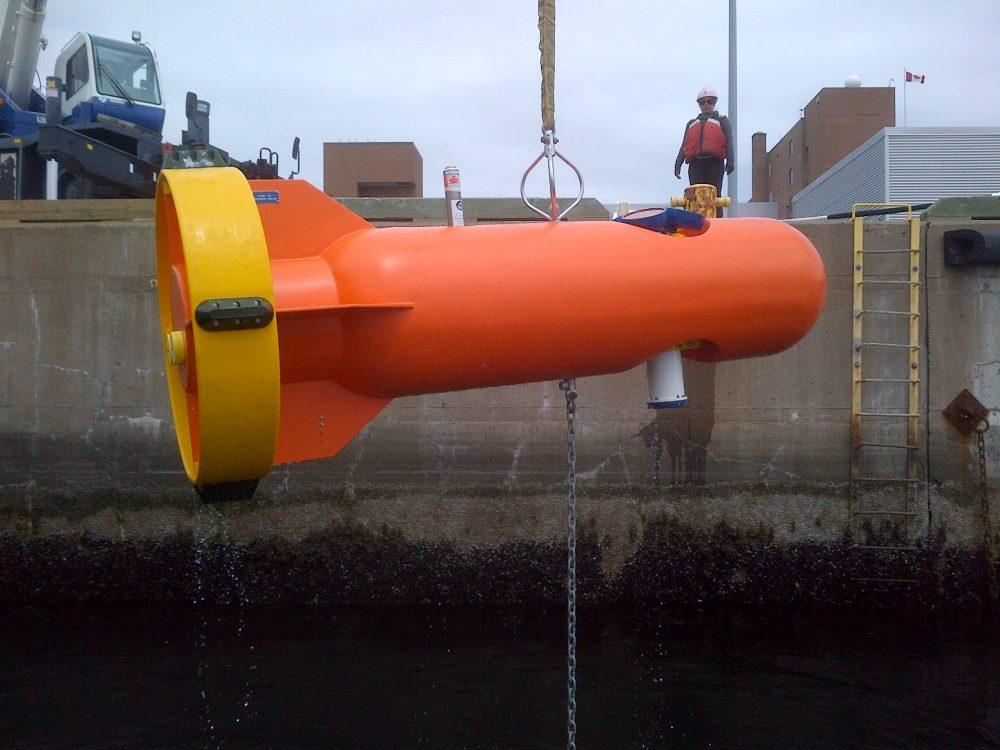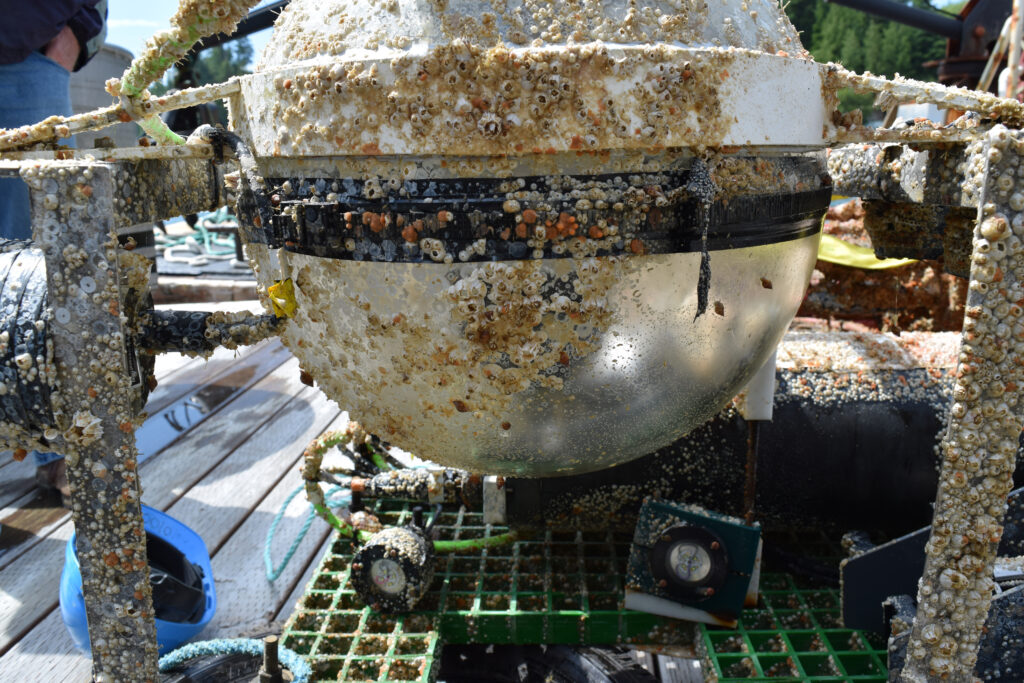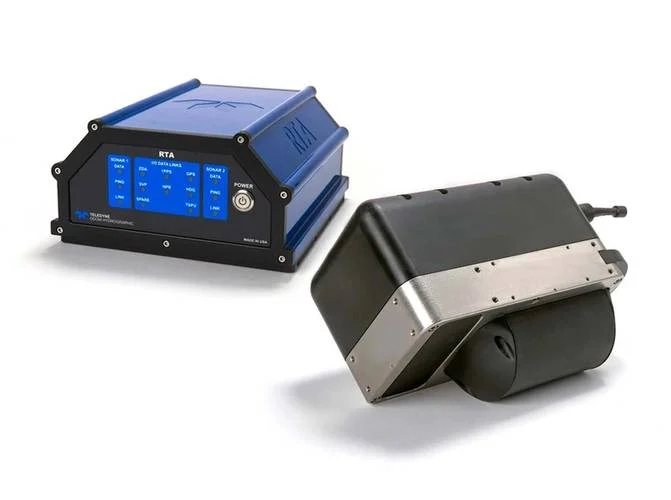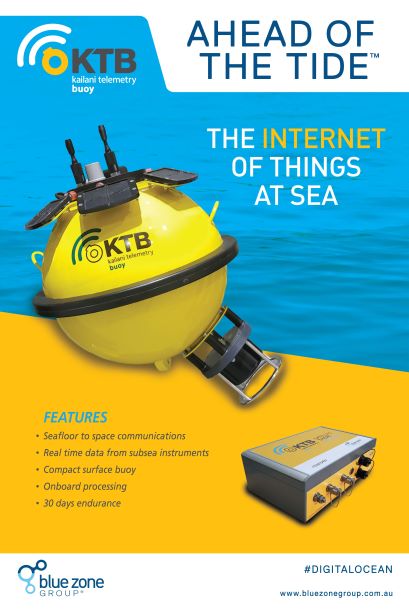BlueZone partners with over 50
world-leading original equipment
manufacturers and systems providers
Deepwater Buoyancy StableMoor® Mooring Buoys
StableMoor® Mooring Buoy
Specifically engineered for high current applications, the StableMoor® is designed to reduce drag and increase mooring stability in extreme flow regimes. By decreasing frontal area (compared to our standard spherical buoys) and increasing dynamic stability in high current areas, the StableMoor® minimizes mooring inclination and excursions. The StableMoor® is cast from a buoyant core of solid DeepTec® syntactic foam and wrapped in a protective layer of GRP that provides a smooth and durable exterior. The high-strength GRP tail and 316L stainless steel mooring swivel allow for smooth transitions from changes in current direction and provide increased directional stability. Best of all, instruments can be installed and removed in minutes without the need to disassemble the unit.
This versatile instrument platform can be provided with single or multiple instrument wells to support upward, downward, or upward and downward looking configurations. Models with two instrument wells can be fitted with a single ADCP cable to an external battery case or with other instrumentation. Instrument wells can be covered by an LDPE acoustically transparent window, further reducing drag without compromising instrument performance. Like other DeepWater Buoyancy mooring products, the StableMoor® can be customized for acoustic modems and supplied with pockets for mooring location devices, CTDs, and other remote sensing equipment.
Read More:
StableMoor Mooring Buoy Datasheet
Key Features
Up to 25-hour mission duration
Speeds up to 4.2 knots
Increased module payload capacity
Search and recovery
Hydrography
Deep sea mineral exploration
Marine & Fisheries research
Product Enquiry
Related products
AML Oceanographic UV Biofouling Control
When instrumentation is deployed underwater in a stationary position for long periods of time, biofouling will occur. This unwanted marine growth causes sensor drift, requiring preventative measures to ensure accurate data.
Read moreOperating frequency from 170 to 220 kHz, 120 degree swath coverage, Up to 512 beams, Phase and amplitude bottom detection, Up to 240m water depth sounding, Titanium and Acetal construction.
Read moreThe Kailani Telemetry Buoy (KTB) implements seafloor to space communications for ocean floor instruments.
Read moreRelated Articles
Ahead of the Tide: A Year of Milestones and Momentum- A Letter from the Director
By Neil Hodges, Managing Director, BlueZone Group As 2025 draws to a close, it’s a moment to reflect on a year that has been nothing short of transformative for...
Read MoreGlobal Journeys, Fresh Faces and Capability Growth That Sets the Stage for the Future For BlueZone Group, 2025 has been nothing short of transformative — a year defined by...
Read MoreSafer Summers: Innovation Beneath the Waves with ArtemisSAR and StarFish
The Advanced Sonar Systems Giving Surf Life Savers the Tools to Protect Lives with Greater Speed, Safety, and Confidence As we turn the page into Aussie summer, the rhythm...
Read More
